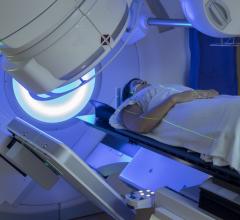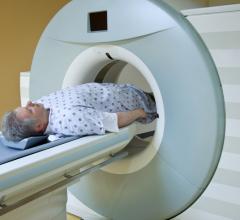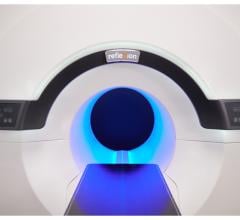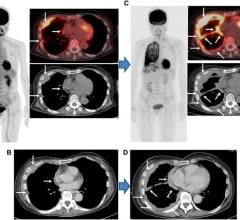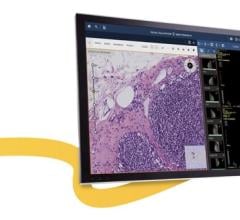
RT for symptomatic bone metastases. Abbreviations: KQ = key question; RT = external beam radiation therapy; SBRT = stereotactic body radiation therapy.
*Algorithm applies to all symptomatic bone metastases either in the setting of no prior RT or after a prior course of RT (ie, reirradiation). Further details pertinent to symptomatic bone metastases in the setting of reirradiation are found in the KQ4 recommendations.
†Patients with metastatic spinal cord or cauda equina compression should receive dexamethasone as part of their up-front management.
‡RT = Selection of treatment dose intensity and planning modality (eg, conventional palliative RT vs SBRT) are discussed in the recommendations section.
June 3, 2024 — The American Society for Radiation Oncology (ASTRO) published an updated clinical guideline that details best practices for treating patients who have symptomatic bone metastases and ways to improve their quality of life. The guideline is available as a free access article in Practical Radiation Oncology, ASTRO’s clinical practice journal.
Many types of cancer can spread to a patient’s skeletal system and trigger new lesions known as bone metastases. These tumors often cause complications such as pain, broken bones and spinal cord compression. Existing treatments aim to provide symptom relief, prevent fractures and control further growth of metastatic bone disease. Decades of research show that external beam radiation therapy is a particularly effective treatment for managing symptomatic bone metastases.
“Radiation therapy is a cornerstone of care for patients with symptomatic bone metastases, offering a nonsurgical option for fast pain relief and improved quality of life with minimal side effects,” said Tracy Balboni, MD, MPH, chair of the guideline task force as well as a professor and the clinical director of skeletal (bone/spine) radiation oncology at Harvard Medical School and the Dana-Farber/Brigham and Women’s Cancer Center in Boston. “Our guideline delineates several evidence-based approaches to deliver this tried-and-true therapy, including meaningful improvement from a single treatment session.”
Since ASTRO last updated its guideline in 2017, several large trials demonstrated the benefits of advanced radiation techniques — intensity-modulated radiation therapy (IMRT) and stereotactic body radiation therapy (SBRT) — to administer a highly targeted, escalated radiation dose for certain patients with bone or spine lesions. Evidence from these clinical trials was included in a systematic review conducted by the Agency for Healthcare Research and Quality (AHRQ) to inform the guideline update.
“The use of conformal radiation and dose escalation for symptomatic bone metastases has moved from the experimental domain toward routine clinical care for many patients,” said Sara Alcorn, MD, PhD, MPH, vice chair of the guideline task force as well as an associate professor and vice chair of clinical strategy for the department of radiation oncology at the University of Minnesota Medical Center in Minneapolis. “As advanced radiation technologies become more widely accepted, we can increasingly help more patients in fewer treatment sessions and re-treat more patients whose bone metastases return.”
The guideline provides updated evidence on best practices for delivering radiation therapy to unirradiated tumors and in the reirradiation setting. Full recommendations and supporting evidence are provided in the guideline; key recommendations are as follows:
- Symptom relief: Based on high-quality evidence, radiation therapy (RT) is strongly recommended to manage pain and other symptoms of bone or spine metastases including those that cause compression of the spinal cord or cauda equina (the nerve roots at the base of the spine).
- Multi-modality treatment: For patients with spine metastases causing spinal cord or cauda equina compression, surgery and dexamethasone combined with RT are recommended over radiation alone. For patients with non-spine bone metastases requiring surgery, postoperative RT is recommended.
- Dosing schedules: The guideline maintains the four previously recommended dosing schedules for conventional RT to treat patients with previously unirradiated non-spine bone metastases: a single fraction of 800 centiGray (cGy); 2000 cGy in five fractions; 2400 cGy in six fractions; or 3000 cGy in 10 fractions. Research indicates that patients experience similar pain relief and minimal side effects with each of these approaches, and while retreatment is more common after single-fraction RT, the convenience of this option may make it the optimal choice for many patients, such as those with limited life expectancy. The guideline also outlines recommended dosing schedules for patients with spinal cord or cauda equina cord compression who are ineligible for surgery, as well as for reirradiation of bone and spine metastases.
- Advanced techniques: Reflecting recent data from multiple clinical trials, SBRT is conditionally recommended over conventional palliative RT for patients with good performance status who do not require surgery or display neurological symptoms. Recommended dose constraints and fractionation regimens for SBRT are detailed in the guideline.
About the Guideline
The guideline was based on a systematic evidence review provided by AHRQ and funded by the Patient-Centered Outcomes Research Institute (PCORI). This review included articles published through January 2023 as well as the Radiation Therapy Oncology Group (RTOG) 0631 trial results published in April 2023.
The multidisciplinary guideline task force included radiation, medical and surgical oncologists, palliative care specialists and a patient representative. The guideline was developed in collaboration with the American Society of Clinical Oncology and the Musculoskeletal Tumor Society and is endorsed by the Canadian Association of Radiation Oncology, the European Society for Radiotherapy and Oncology, the Musculoskeletal Tumor Society and the Royal Australian and New Zealand College of Radiologists.
ASTRO's clinical guidelines are intended as tools to promote appropriately individualized, shared decision-making between physicians and patients. None should be construed as strict or superseding the appropriately informed and considered judgments of individual physicians and patients.
Resources on Radiation Therapy and Bone Metastases
Physician-reviewed information is available from RT Answers, ASTRO’s patient education site:
Radiation Therapy for Bone Metastases PDF brochure
Bone Metastases Side Effects Chart
Video – An Introduction to Radiation Oncology (also available in Spanish)
Radiation Therapy for Cancer PDF brochure (also available in Spanish)
For more information: www.astro.org


 August 09, 2024
August 09, 2024 


